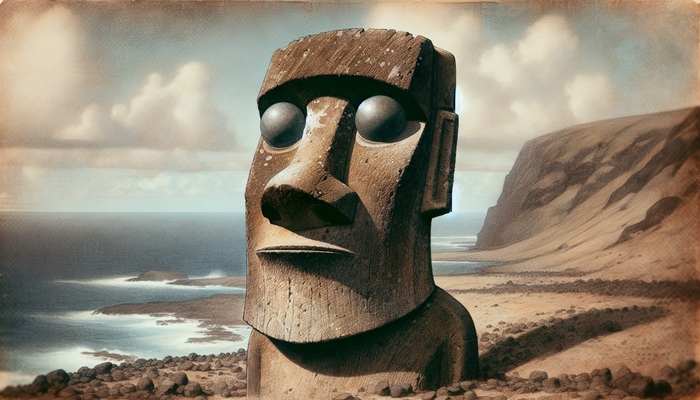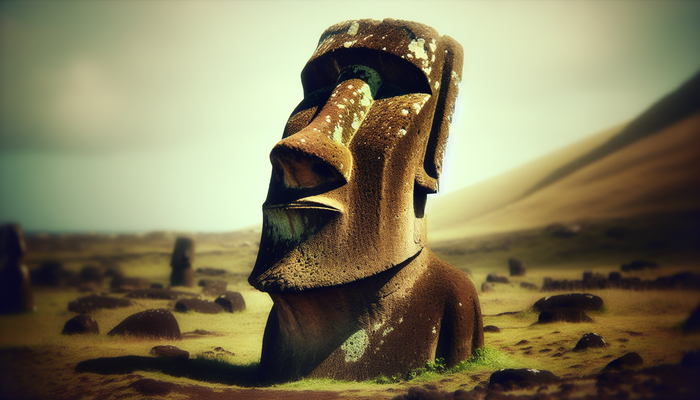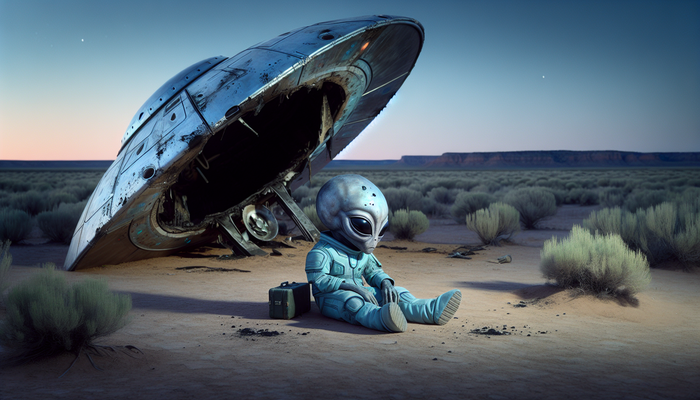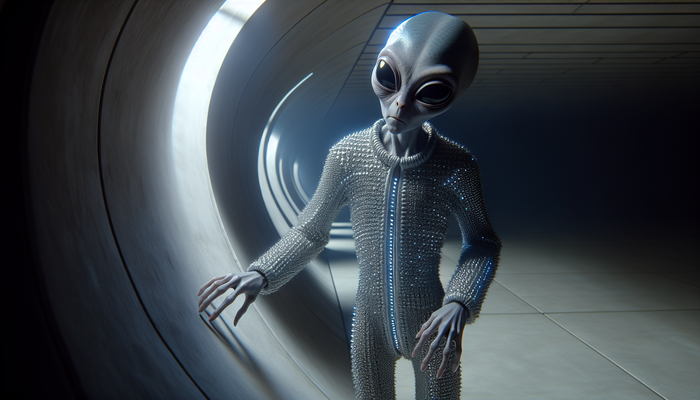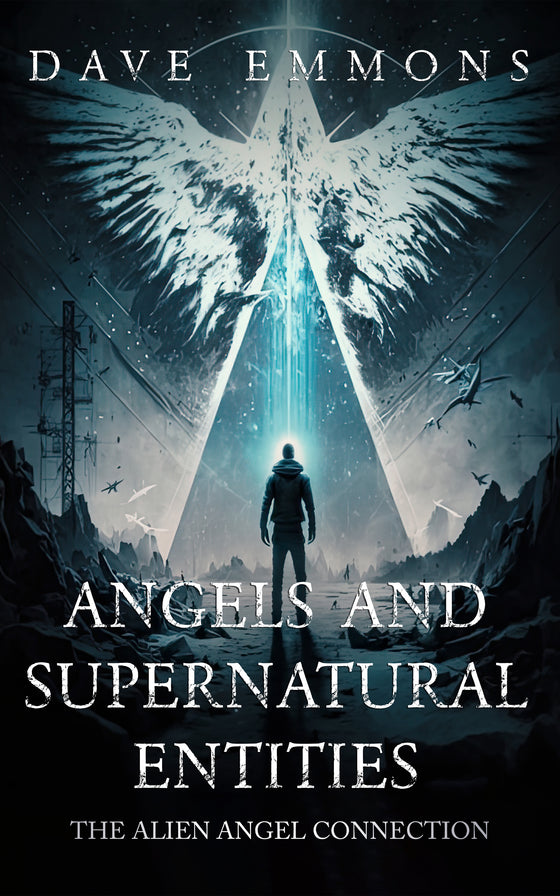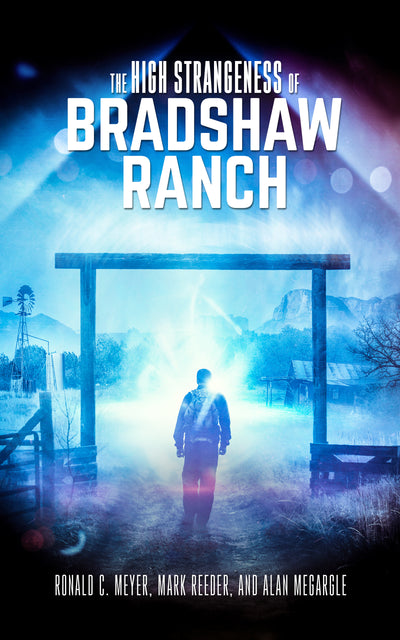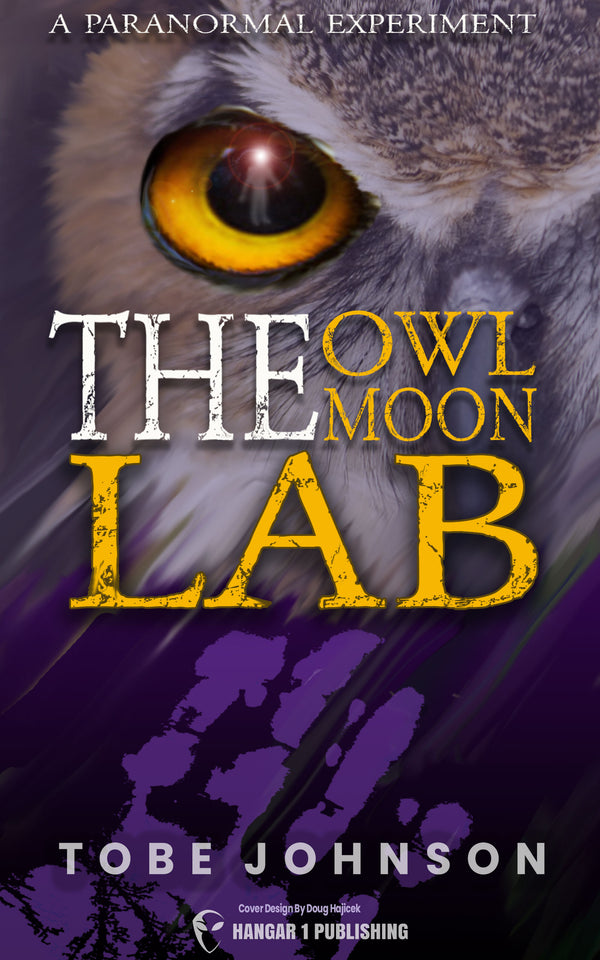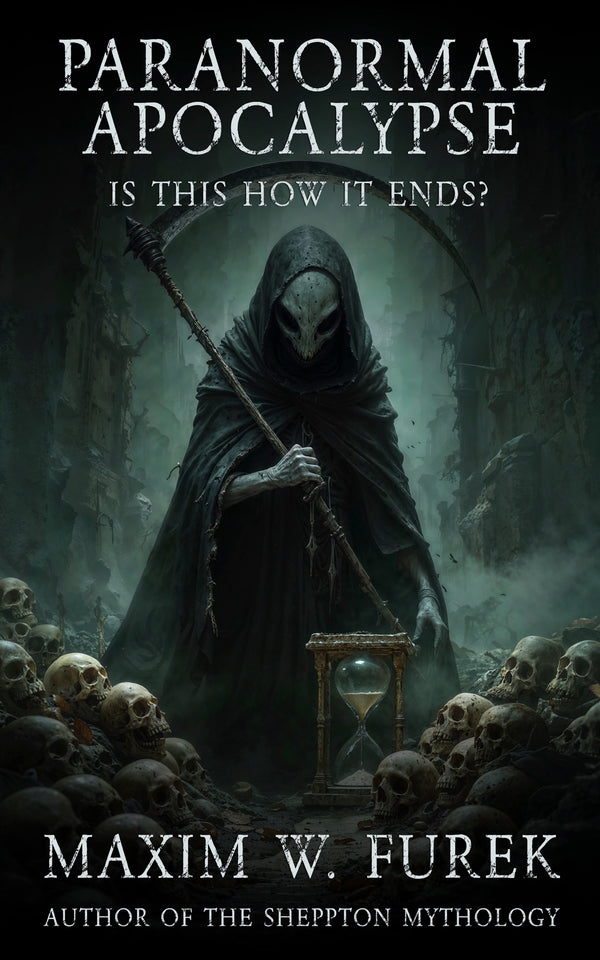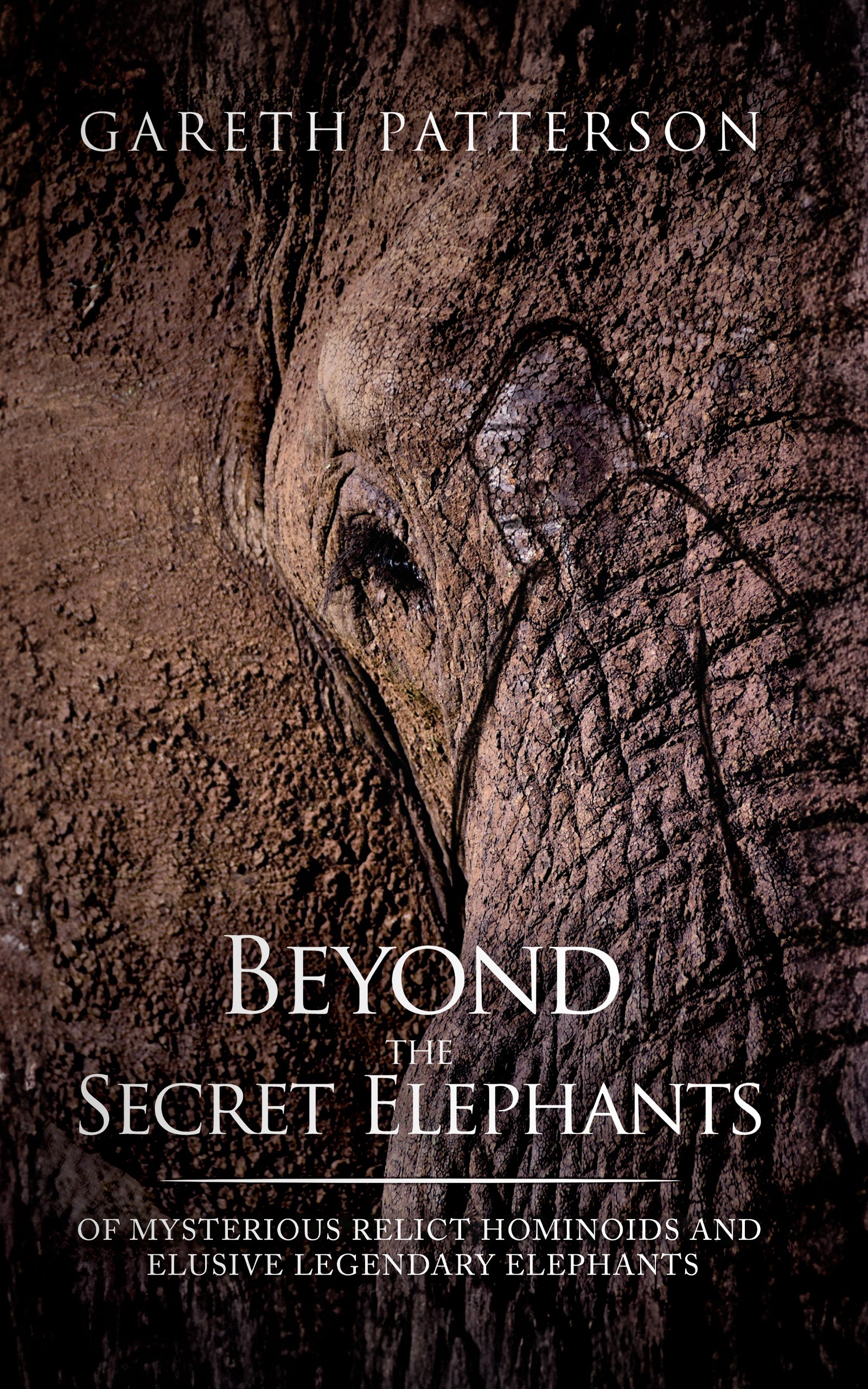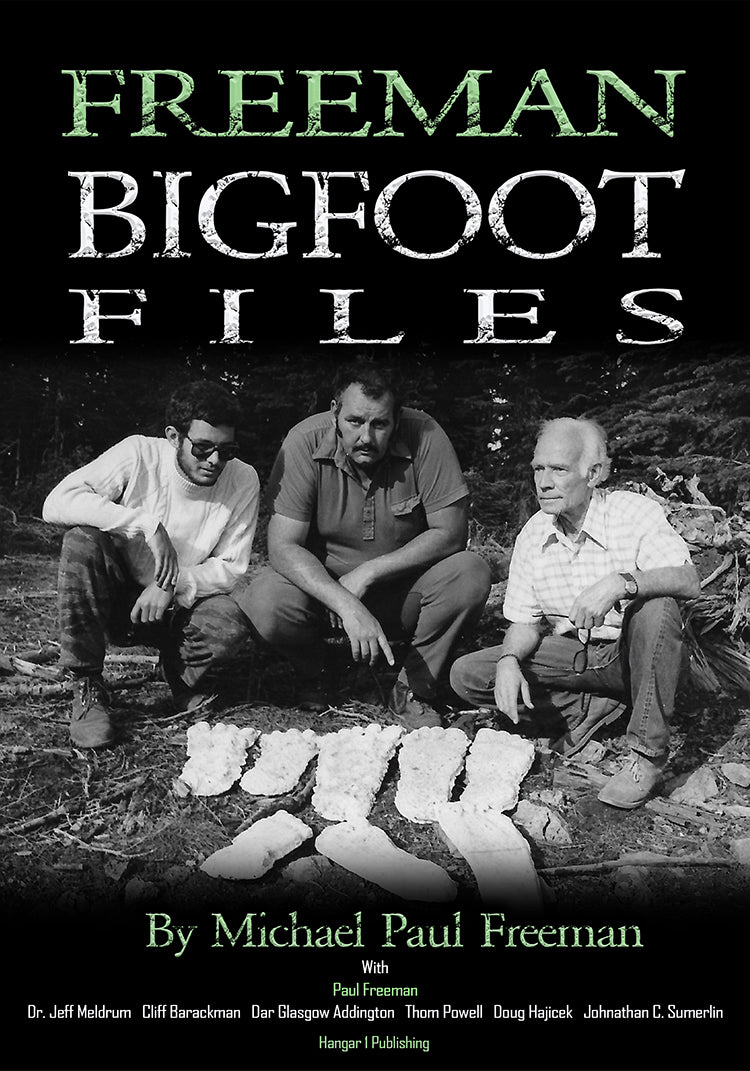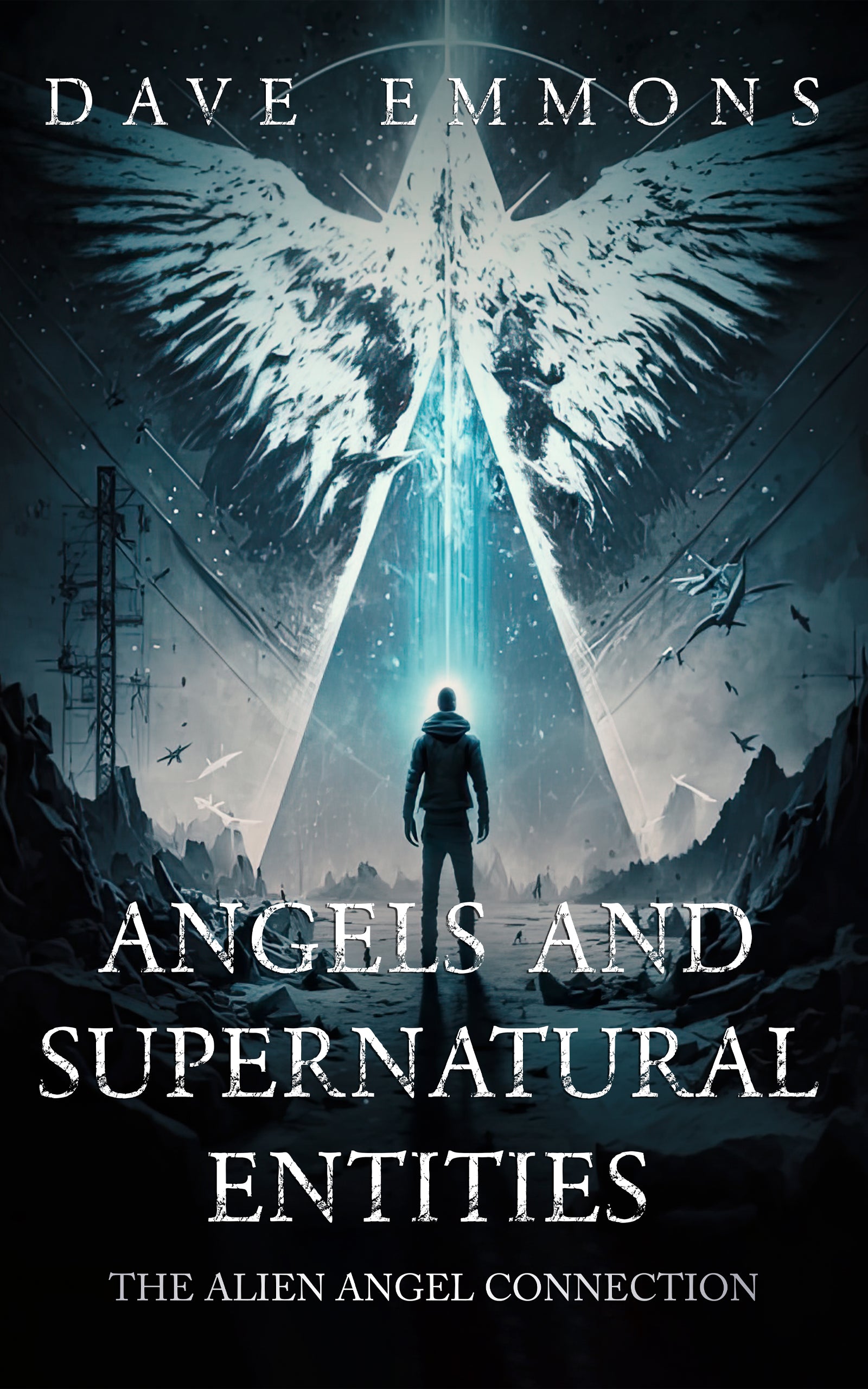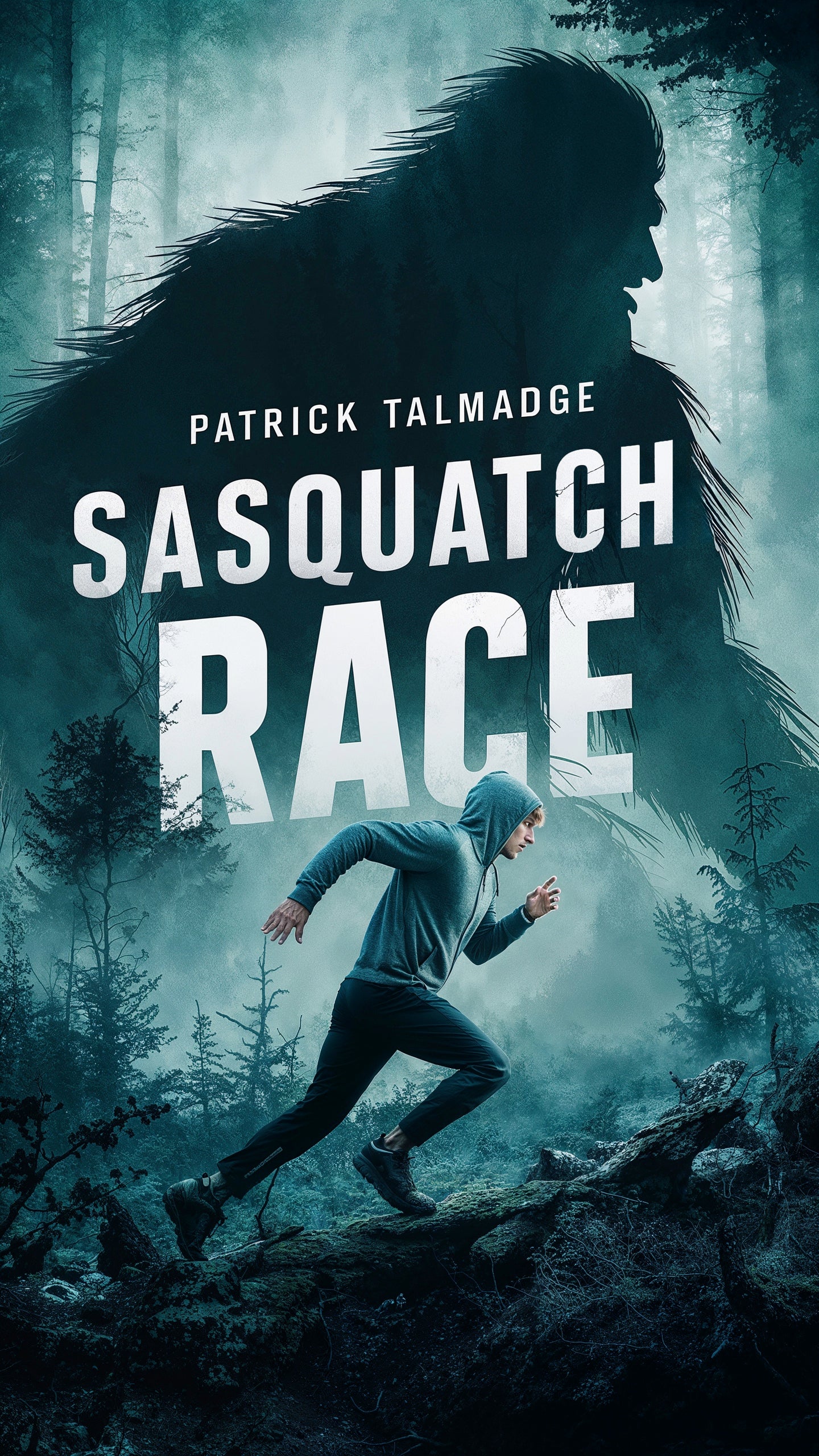MIB Encounters: Real Stories and Theories

By Howard Callahan, Ufologist
They arrive unannounced in their pristine black suits, fedoras casting shadows over expressionless faces. Their questions are pointed, their knowledge of your recent UFO sighting unnervingly precise. As they leave, their warning hangs in the air like a toxic cloud: "Tell no one what you saw. Forget it ever happened."
For over 70 years, stories of "Men in Black" have circulated among those who claim to have witnessed something extraterrestrial. Unlike their wisecracking Hollywood counterparts portrayed by Will Smith and Tommy Lee Jones, real-world reports describe figures far more sinister-entities whose presence evokes inexplicable dread, whose features sometimes barely register as human, and whose purpose seems to be enforcing silence about what lurks in our skies.
But who-or what-are these mysterious figures? Government agents maintaining cosmic secrecy? Extraterrestrial monitors walking among us? Manifestations of psychological trauma following extraordinary encounters? Or perhaps elements of an evolving modern mythology?
The answers remain as shadowy as the men themselves.
The Genesis of the Shadow Men: Tracing the Earliest Reports
The story begins on June 27, 1947, in Puget Sound near Washington's Maury Island. Harbor patrolman Harold Dahl claimed he was on a conservation mission with his son Charles when six donut-shaped objects appeared hovering approximately half a mile above their boat. According to Dahl, one object malfunctioned, raining metallic debris that struck his son's arm and killed their dog. Dahl reportedly took photographs of the strange crafts.
The following morning, Dahl experienced what would become the prototype for countless MIB encounters. A man in a black suit approached him at a local diner. This stranger possessed uncanny knowledge about what Dahl had witnessed, recounting details with disturbing precision before warning him against speaking about the incident.
"What I have said is proof to you that I know a great deal more about this experience of yours than you will want to believe," the man allegedly told Dahl.
Here's where the story takes a twist: both Dahl and his supervisor, Fred Crisman (who claimed to have later seen one of the objects himself), eventually admitted the entire incident was a hoax. Yet despite its questionable origins, this account would become the foundation stone of MIB mythology.
This nascent legend gained substantial momentum through the work of writer Gray Barker. His 1956 book, "They Knew Too Much About Flying Saucers," compiled multiple accounts of mysterious visits following UFO sightings. The title itself perfectly captured the implicit threat these figures represented: knowledge of flying saucers was dangerous, potentially even fatal.
Among Barker's subjects was Albert K. Bender, founder of the International Flying Saucer Bureau and publisher of a UFO magazine called "Space Review." Bender's story represented a pivotal moment in MIB lore. In 1953, he abruptly shut down both his organization and magazine after allegedly being visited by "three men wearing dark suits." Barker described these visitors as "Three men in black suits with threatening expressions on their faces. Three men who walk in on you and make certain demands. Three men who know that you know what the saucers really are!"
By 1962, when Bender published his own account titled "Flying Saucers and the Three Men," the narrative had evolved dramatically. His description now portrayed entities with supernatural abilities that "floated about a foot off the floor" with eyes that "suddenly lit up like flashlight bulbs." Bender claimed these beings were monsters from a planet called "Kazik."
Even Barker privately questioned whether Bender's account was simply a "dream." Nevertheless, the transformation from potentially mundane government agents to otherworldly entities was complete, setting the stage for increasingly bizarre MIB reports in the coming decades. What had begun as a possibly fabricated encounter had morphed into a complex mythology that transcended simple explanation.
This pattern-where seemingly ordinary government agents transform into something far stranger-would repeat throughout the history of MIB encounters, reflecting our collective uncertainty about whether the threat to UFO witnesses comes from earthly or cosmic sources.
Anatomy of an Encounter: Common Characteristics and Behaviors
Despite their murky origins, reports of MIB encounters display remarkable consistency across decades and geographical boundaries. Witnesses frequently describe figures whose appearance mimics human form while somehow missing the mark in subtly disturbing ways.
The standard uniform rarely varies: immaculate black suits (often described as looking outdated or unusually crisp), white shirts, narrow black ties, and sometimes fedoras or homburg-style hats. Yet it's their physical characteristics that raise questions about their true nature. MIBs are typically described as unusually pale with a waxy or artificial complexion. Many reports note the absence of eyebrows and eyelashes, giving their faces a mask-like quality. Their eyes may appear too large or too dark, and their lips are sometimes described as unnaturally thin or ruby red.
"They look like pale-faced vampires," noted one researcher. "They look like ghouls. They look like something dug up out of the ground."
Their movements and speech patterns further amplify their otherness. Witnesses frequently report stiff, mechanical movements, as if the MIBs are unfamiliar with human locomotion. Their speech is typically described as monotone, robotic, and lacking natural cadence or emotion. Some reports even suggest telepathic communication rather than spoken words.
The behavioral pattern of these entities follows a strikingly consistent script. They appear shortly after a UFO sighting, sometimes within hours, suggesting an elaborate monitoring system or extraordinary knowledge. They arrive in groups of two or three, often in pristine black vehicles (typically described as high-end sedans like Cadillacs or Lincolns) that sometimes vanish as mysteriously as they appeared.
The 1967 Robert Richardson case exemplifies their intimidation tactics. Richardson claimed he collided with a UFO while driving in Toledo, Ohio, and collected a small piece of metal from the site. A week later, two men in black suits arrived at his door requesting the metal fragment. When Richardson explained he had turned it over for analysis, they issued a chilling threat: "If you want your wife to stay as pretty as she is, then you'd better get the metal back."
Perhaps the most disturbing and well-documented case involves Dr. Herbert Hopkins, a respected physician who had been investigating a UFO incident in Maine in 1976. Hopkins received a phone call one evening from someone claiming to represent a UFO research organization, asking if Hopkins was alone and could discuss his work. Hopkins agreed, and almost immediately after hanging up, there was a knock at his door.
Standing there was a man whose appearance haunted Hopkins for years: completely bald with no eyebrows or eyelashes, paper-white skin, and bright red lips. His black suit appeared brand new. During their conversation, the man performed what seemed like impossible magic-instructing Hopkins to take a coin from his pocket, which then appeared to transform color before dematerializing completely. The stranger then ominously connected this vanishing act to the death of Barney Hill (a famous alleged alien abductee), stating: "Barney Hill died because he did not have a heart, just as you no longer have a coin."
The visitor ordered Hopkins to destroy all his UFO research, which the terrified doctor promptly did. What makes this account particularly compelling is Hopkins' professional background and credibility-he had nothing to gain and potentially his reputation to lose by sharing such a bizarre story.
These encounters leave witnesses with more than just warnings. Many report physical symptoms including disorientation, nausea, headaches, and electronics malfunctioning in their homes for days afterward. The psychological impact often proves even more devastating, with witnesses experiencing long-term anxiety, paranoia, and a profound sense of having encountered something fundamentally alien to human experience.
Decoding the Mystery: Leading Theories and Interpretations
The persistent mystery of the Men in Black has generated four primary theories about their true identity and purpose, each with its own supporting evidence and logical challenges.
The Government Agent Hypothesis
The Government Agent Hypothesis proposes that MIBs are operatives from a covert government agency tasked with suppressing public knowledge about UFOs. This theory draws strength from historical evidence of government concern about UFO reports. A declassified document from 1979 reveals that the US Air Force was indeed worried about individuals impersonating military officers to question UFO witnesses, suggesting that someone was conducting unofficial investigations.
More compelling is the 1953 Robertson Panel, a CIA-sponsored scientific committee that examined the UFO phenomenon. While the panel concluded UFOs weren't a direct threat to national security, they expressed concern about their "indirect" threat-specifically that public fascination could overwhelm military communications channels and create vulnerability to psychological warfare by enemies. The panel recommended using mass media, including Walt Disney productions, to reduce public interest in the subject through education or dismissal of the phenomenon.
"The debunking aim would result in reduction in public interest in flying saucers," stated the report, adding that "this education could be accomplished by mass media such as television, motion pictures, and popular articles."
This documented strategy of using media influence to shape public perception of UFOs aligns perfectly with the MIB narrative of information control. However, it fails to explain the more bizarre aspects of reported encounters-the strange physical appearance, impossible abilities, and otherworldly quality many witnesses describe.
The Extraterrestrial Hypothesis
The Extraterrestrial Hypothesis suggests the MIBs are themselves aliens, perhaps monitoring human awareness of their presence. Their odd appearance and behavior could represent beings not entirely comfortable in human form-shapeshifters struggling to maintain a convincing disguise. This would explain their reported awkwardness with everyday objects (like Dr. Hopkins' coin or the infamous "jello drinker" case where an alleged MIB didn't know how to eat jello), their stilted speech patterns, and their sometimes outdated attire, as if copying human appearance from limited reference materials.
Albert Bender's claim that the MIBs were creatures from planet "Kazik" represents an early version of this theory. Critics argue that if advanced aliens wanted to remain hidden, they would surely develop better disguises-though proponents counter that their imperfections might be intentional, creating psychological trauma that discredits witnesses through the sheer absurdity of their claims.
The Paranormal/Ultraterrestrial Hypothesis
The Paranormal/Ultraterrestrial Hypothesis, championed by researcher John Keel, places MIBs in a broader context of supernatural phenomena. Keel, who investigated the famous Mothman sightings in Point Pleasant, West Virginia (where MIB reports were actually more common than Mothman sightings), suggested these entities weren't simply extraterrestrials but "ultraterrestrials"-beings from dimensions beyond our comprehension who have interacted with humans throughout history.
"We are like ants, trying to view reality with very limited perceptive equipment," Keel wrote. "We are biochemical robots helplessly controlled by forces that can scramble our brains, destroy our memories and use us in any way they see fit. They have been doing it to us forever."
This perspective connects MIBs to folkloric traditions of mysterious, intimidating figures like Spring-Heeled Jack in Victorian England (described as wearing black with glowing red eyes) or even earlier accounts of demonic visitors. Their purpose, in this view, might transcend simple information suppression-they could be trickster entities feeding on human fear or confusion.
The Folklore and Psychological Hypothesis
Finally, the Folklore and Psychological Hypothesis proposes that MIBs represent a modern myth-a psychological response to extraordinary experiences. When someone witnesses something that defies conventional explanation, their mind naturally seeks to create narrative coherence, often drawing on cultural references and archetypal imagery. The frightening encounter with authority figures warning against sharing forbidden knowledge mirrors ancient taboo stories across cultures.
The "game of telephone" effect, where stories morph and acquire details with each retelling, could explain how the initial (and admittedly hoaxed) account of Harold Dahl evolved into increasingly bizarre narratives. The psychological impact of witnessing a genuine anomalous phenomenon might also create a heightened state where ordinary encounters are perceived as threatening or supernatural.
This perspective doesn't necessarily dismiss all MIB accounts as imaginary but frames them within the context of human psychology and narrative-making. The consistent appearance across cases might simply reflect the power of suggestion and shared cultural imagery rather than objectively real entities.
Each theory contains elements that address certain aspects of the MIB phenomenon while failing to fully explain others-perhaps suggesting that multiple interpretations might simultaneously hold truth. The government agent hypothesis explains the intimidation tactics but not the paranormal elements; the extraterrestrial hypothesis addresses the bizarre characteristics but raises questions about motive; the ultraterrestrial view connects modern accounts to historical patterns but remains unfalsifiable; and the psychological model makes sense of the mythic qualities but struggles with the cross-cultural consistency of reports.
MIB Tactics: Evolving with the Times?
As technology and society have evolved, so too, apparently, have the methods of the Men in Black. Classic MIB encounters featured the direct approach: the ominous knock on the door, the face-to-face intimidation, the explicit threats. Today's reports suggest more sophisticated surveillance and interference techniques.
Electronic harassment has become a common thread in modern accounts. John Keel reported that his phone lines were tapped, and many researchers claim to have experienced strange interference during calls when discussing sensitive UFO information. One witness reported: "I'm on the line and the operator breaks in with an emergency call," only to find themselves speaking with someone claiming knowledge about their UFO research.
The 2008 incident at a hotel near Niagara Falls demonstrates this evolution. After the hotel manager and security guard reported seeing a triangular UFO, surveillance footage supposedly captured two unusually tall men in black suits and hats entering the building looking for them. A woman who spoke with these figures claimed they had "identical faces" with "extremely pale skin, no eyebrows, no eyelashes, and abnormally large eyes." More unsettling was her sense that "the men knew what she was thinking." The footage itself, while grainy and inconclusive, shows two tall figures in dark clothing-though skeptics argue they could simply be businessmen or hotel guests.
This rare visual evidence highlights a paradox of the modern era: despite ubiquitous cameras and recording devices, documented MIB encounters have seemingly decreased rather than increased. This contradiction prompts several possibilities: perhaps MIB activity has genuinely declined; maybe their methods have become more sophisticated and undetectable; or possibly the phenomenon was primarily active during the early Cold War era when UFO sightings peaked in public consciousness.
The famous Dan Aykroyd incident from 2002 illustrates this ambiguity. While working on a UFO documentary series for the Sci-Fi Channel, Aykroyd claimed he stepped outside during a break and noticed a black Ford sedan across the street. A tall man in a black suit stared menacingly at him, but when Aykroyd looked away momentarily, both the man and car had vanished. Two hours later, Aykroyd learned his show had been canceled. While Aykroyd believed this was a genuine MIB encounter, skeptics note that in bustling New York City, a car could easily have driven away in a moment of distraction, and TV shows are canceled for countless reasons unrelated to paranormal suppression.
"It was very apparent these people were frightened," recalled researcher Stan Gordon about witnesses who reported MIB encounters in Pennsylvania during the 1970s. "They had seen something that wasn't supposed to exist."
Modern claims of technology-based intimidation extend to online harassment, shadow banning of UFO content, and even allegations from high-profile whistleblowers like David Grush, who claimed there is an "ongoing campaign of intimidation and suppression" against those who come forward with UAP (Unidentified Aerial Phenomena) information. While Grush hasn't specifically mentioned Men in Black, his claims that he was shown "they could touch me anytime they wanted to" echo the classic MIB intimidation tactics in contemporary form.
Whether these modern manifestations represent an evolution of the same phenomenon or simply our cultural tendency to interpret new forms of authority and suppression through familiar mythic frameworks remains an open question.
MIB in the Cultural Mirror: From Fringe to Popular Consciousness
Few fringe phenomena have made the leap to mainstream awareness as successfully as the Men in Black. What began as whispered accounts in obscure UFO newsletters transformed into global entertainment, fundamentally reshaping how we perceive these mysterious figures.
The original "Men in Black" comic series created by Lowell Cunningham in the early 1990s took significant creative liberties with the MIB concept. In Cunningham's vision, the secret organization monitored not just aliens but all paranormal activity, including "demons, mutants, zombies, werewolves, vampires, legendary creatures and other paranormal beings." More dramatically, his comics portrayed the MIB as ruthless-willing to use "death and destruction" to accomplish their missions, with agents severing all ties to their former lives. The organization's goal wasn't merely to keep the peace but to "manipulate and reshape the world in their own image."
When Hollywood transformed this already-modified concept into the 1997 blockbuster starring Will Smith and Tommy Lee Jones, the MIB underwent another metamorphosis. The film's tone shifted from ominous to comedic, portraying the agents as heroes protecting Earth rather than sinister silencers of truth. The threats became external (alien invaders) rather than internal (government secrecy), and memory erasure via the iconic "neuralyzer" replaced the psychological intimidation of real reported encounters.
"The transformation of the story from a first press report to a folkloric tale to a comic book and now to a film illustrates how the myth is transformed," noted cultural critic Phil Patton in 1997. "That process is not unlike the children's game of telephone or what the literary critic Harold Bloom calls innovation by misinterpretation."
This sanitization and commercialization of the MIB concept has had a profound effect on how the public perceives the phenomenon. For most people today, "Men in Black" conjures images of Will Smith's wise-cracking Agent J rather than the pale, expressionless figures that terrified witnesses like Dr. Herbert Hopkins. The success of the franchise (four films, an animated series, video games, and theme park attractions) has effectively neutered the original concept, turning a figure of dread into a pop culture punchline.
Some researchers argue this transformation wasn't accidental but represents a deliberate effort to shape public perception-similar to the Robertson Panel's 1953 recommendation to use entertainment media to reduce public interest in UFOs. By turning a terrifying concept into family-friendly entertainment, the cultural threat is neutralized. Others suggest the opposite-that Hollywood has been subtly preparing the public for eventual disclosure of extraterrestrial reality through fictional narratives that contain kernels of truth.
What's undeniable is that the cinematic portrayal has made it increasingly difficult for genuine MIB encounters to be taken seriously. When a witness describes being visited by men in black suits warning them to stay silent, the immediate cultural reference point is now a comedy film rather than the disturbing accounts documented by researchers like John Keel and Gray Barker.
This transformation from fringe phenomenon to global entertainment franchise demonstrates how quickly our culture can absorb and recontextualize even its most disturbing elements, often stripping them of their original power in the process.
The Psychological Footprint: The Trauma of Being Visited
Regardless of their objective reality, MIB encounters leave profound psychological impacts on those who experience them. The immediate effects typically include intense fear, physical symptoms like dizziness and nausea, and sometimes a sense of having been violated mentally or spiritually.
"In 10 seconds I was overwhelmed by fear..." recounted Peter Rojcewicz, a professor who claimed an MIB approached him in a library while he was reading a UFO book. "I had a sense that this man was out of the ordinary and that idea frightened me... I was terrified."
The long-term effects often prove even more significant. Many witnesses report persistent anxiety, paranoia about being watched, and sometimes dramatic life changes. Rojcewicz noted that after MIB encounters, "Some become more successful in their jobs and marriages and report a joie de vivre. Others lose their jobs and marriages...Some become addicted to drugs, and many feel they have been victimized."
This stark divergence in outcomes highlights how personal belief systems and psychological makeup influence how individuals process these extraordinary encounters. Rojcewicz cited a case involving a psychiatrist and her husband, a professor of education, who both experienced an MIB encounter after witnessing a UFO. "She has been all right since then, but he has not," Rojcewicz explained, suggesting the psychiatrist's greater openness to spiritual or non-rational experiences provided psychological resilience her more rationalist husband lacked.
The transformative power of these encounters has led some researchers to suggest that causing psychological distress might be a deliberate MIB tactic. By leaving witnesses traumatized, confused, or appearing mentally unstable, their testimonies about the original UFO sighting become easier to dismiss. This psychological warfare approach would align with both government intelligence techniques and the more esoteric notion that these entities feed on human fear or emotional distress.
Interestingly, Rojcewicz suggested laughter as a potential defense mechanism against the Men in Black: "If they ask you why you're laughing, tell them, 'Rojcewicz told me to do it.'" He added: "When you confront evil, don't feed them your fear. Say you are not worried - ha-ha." This unusual recommendation hints at the possibility that the power of these entities-whether government agents, aliens, or paranormal manifestations-might be partially dependent on the witness's fear response.
The psychological impact extends beyond individual witnesses to create ripple effects in communities and research groups. When someone shares an MIB encounter, it often generates fear among others who have witnessed UFOs or who are engaged in UFO research. This contagious anxiety can effectively silence not just one witness but entire networks of potential reporters, amplifying the suppressive effect whether intentional or not.
"It is definitely a traumatic event that no one wants to remember, no one wants to talk about, and everyone who's experienced it wishes they could forget," said one researcher. "And the scars never go away. They never go away."
Historical Echoes and Modern Parallels
The Men in Black phenomenon, while most commonly associated with the UFO era beginning in 1947, may have deeper historical roots and broader cultural parallels than first apparent. Some researchers suggest that accounts of mysterious dark-clad figures with inhuman features and threatening demeanors have appeared throughout human history, simply interpreted through the cultural frameworks of their time.
In 1665, historical records from the British Isles document an incident in the village of Greater Massingham where, following reports of "impossible lights in the sky," three pale-skinned strangers dressed in black appeared the next day, questioning villagers about what they had witnessed. When confronted by a local man, one of the strangers reportedly struck him down "not with a fist but some sort of invisible force" that made him feel "as if the inside of his head was filling up with water." The strangers warned the villagers to "speak no more of what you have witnessed in the sky" before vanishing into the woods. Despite an organized hunt with "weapons and hounds," the men were never found.
Similar accounts from the same era describe "pale-skinned and darkly clad men" who threatened farmers after celestial events, with witnesses claiming the men "disappeared into the surrounding trees"-interpreted at the time as evidence they were "werewolves" or other supernatural creatures. The infamous Spring-Heeled Jack who terrorized Victorian England was invariably described as "clothed in black with glowing red eyes from behind a pale white face"-characteristics strikingly similar to modern MIB reports.
These historical parallels suggest a potential continuity in human encounters with anomalous entities, with the interpretation shifting from supernatural (demons, warlocks, vampires) to extraterrestrial or governmental as cultural frameworks evolved. The core experience-mysterious humanoid figures with slightly "off" appearances delivering warnings or threats following unexplained phenomena-remains remarkably consistent across centuries.
Modern parallels exist not just in MIB reports but in adjacent phenomena like the "Slenderman" folklore, which emerged online in 2009 and describes a tall, unnaturally thin figure in a black suit who stalks and traumatizes victims. While clearly a created fiction, the Slenderman archetype shares striking similarities with traditional MIB descriptions, suggesting the enduring power of this figure in our collective imagination.
More concretely, contemporary whistleblowers in the UAP field continue to report intimidation tactics that echo classical MIB methods, if not their distinctive appearance. David Grush's congressional testimony about a "campaign of intimidation" against UAP whistleblowers, including threats to his family and career, follows the same pattern established in early MIB accounts-powerful entities working to suppress information about unidentified aerial phenomena through personal intimidation rather than formal legal channels.
The 2004 USS Nimitz incident provides another modern example. After Navy pilots encountered the now-famous "Tic Tac" UAP, radar operator Gary Voorhis reported that "men in plain clothes or flight suits with no insignias" came aboard the USS Princeton and confiscated the radar data recording devices. Whether these were legitimate military personnel or something stranger remains unclear, but the pattern of unknown figures appearing to remove evidence following a UFO event precisely matches the classic MIB narrative.
These historical echoes and modern parallels suggest the MIB phenomenon transcends any single explanation. Like a dark mirror reflecting our deepest uncertainties about authority, outside intervention, and forbidden knowledge, these mysterious figures continue to evolve alongside human society while maintaining their essential character as guardians of cosmic secrets-whether those secrets originate from government laboratories, distant stars, or dimensions beyond our comprehension.
From Bigfoot to UFOs: Hangar 1 Publishing Has You Covered!
Explore Untold Stories: Venture into the world of UFOs, cryptids, Bigfoot, and beyond. Every story is a journey into the extraordinary.
Immersive Book Technology: Experience real videos, sights, and sounds within our books. Its not just reading; its an adventure.


